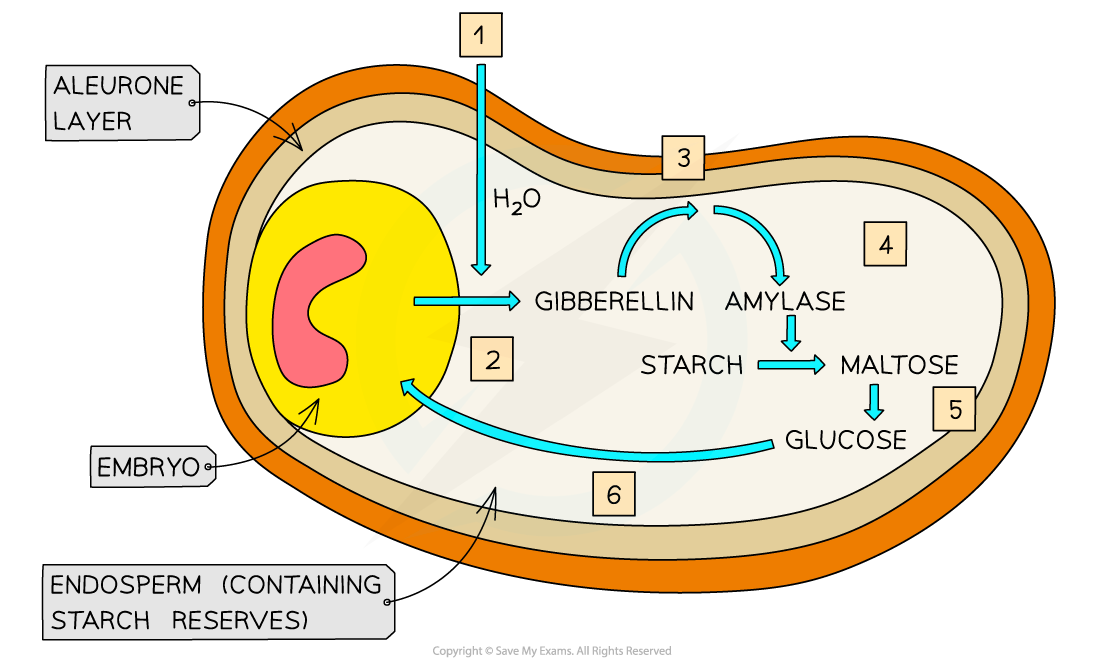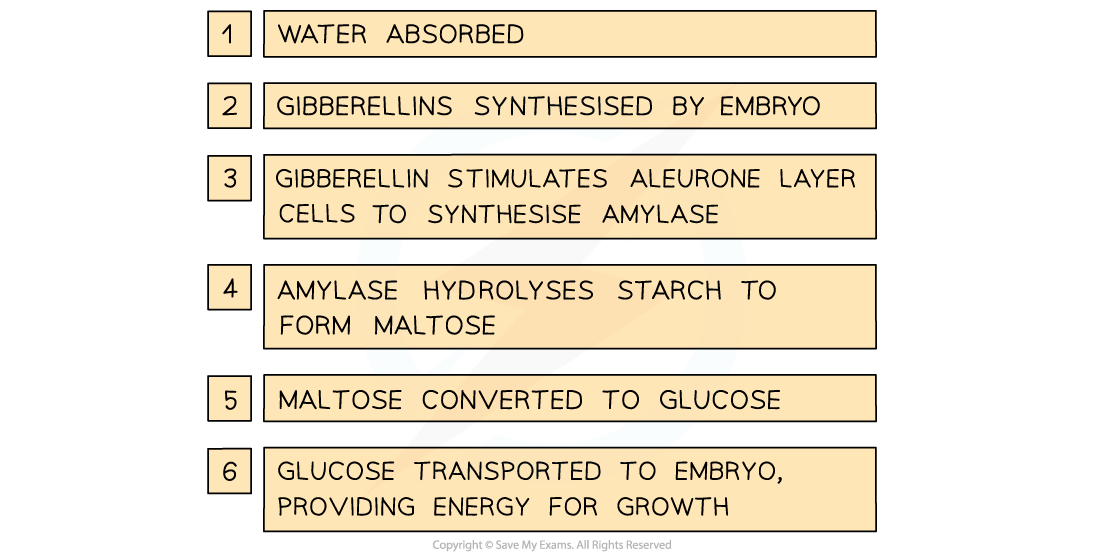- 翰林提供学术活动、国际课程、科研项目一站式留学背景提升服务!
- 400 888 0080
CIE A Level Biology复习笔记15.2.3 The Role of Gibberellin in Germination of Barley
The Role of Gibberellin in Germination of Barley
- Gibberellins are a type of plant growth regulator involved in controlling seed germination and stem elongation
- When a barley seed is shed from the parent plant, it is in a state of dormancy (contains very little water and is metabolically inactive)
- This allows the seed to survive harsh conditions until the conditions are right for successful germination (eg. the seed can survive a cold winter until temperatures rise again in spring)
- The barley seed contains:
- An embryo – will grow into the new plant when the seed germinates
- An endosperm – a starch-containing energy store surrounding the embryo
- An aleurone layer – a protein-rich layer on the outer edge of the endosperm
- When the conditions are right, the barley seed starts to absorb water to begin the process of germination
- This stimulates the embryo to produce gibberellins
- Gibberellin molecules diffuse into the aleurone layer and stimulate the cells there to synthesise amylase
- In barley seeds, it has been shown that gibberellin does this by regulating genes involved in the synthesis of amylase, causing an increase in the transcription of mRNA coding for amylase
- The amylase hydrolyses starch molecules in the endosperm, producing soluble maltose molecules
- The maltose is converted to glucose and transported to the embryo
- This glucose can be respired by the embryo, providing the embryo with the energy needed for it to grow


The role of gibberellin in the germination of a barley seed
转载自savemyexams


最新发布
© 2025. All Rights Reserved. 沪ICP备2023009024号-1








